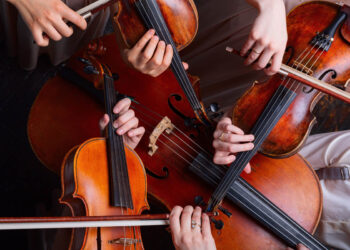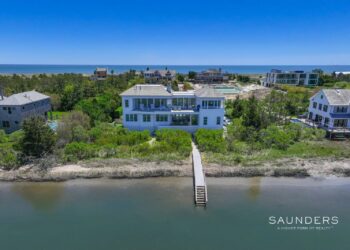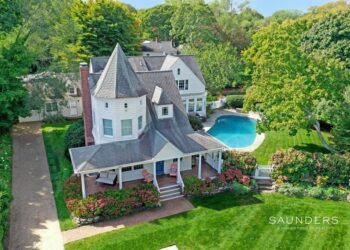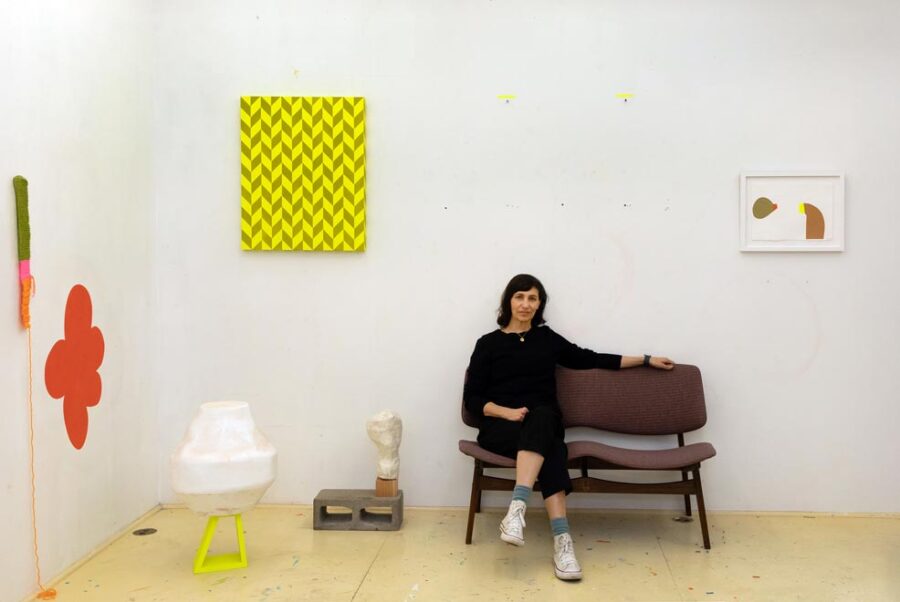
There are many layers to the legend of Almond Zigmund. Raised in Brooklyn, she received her BFA from Parsons School of Design in New York and Paris. She earned her MFA from the University of Nevada in Las Vegas, where she studied with the MacArthur Award-winning art critic Dave Hickey. Ms. Zigmund took time from her busy schedule to talk with Hamptons.com about her commitment to art, how it came about, and her exciting exhibit coming to Guild Hall in the spring.
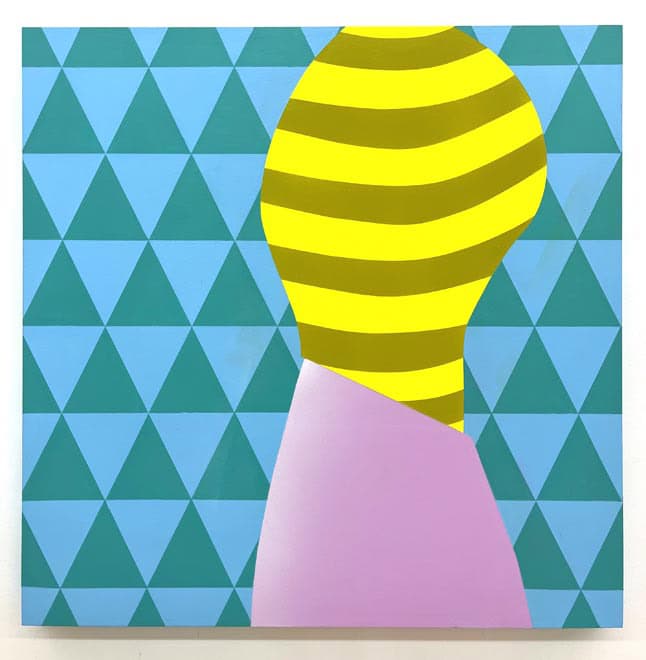
Zigmund makes large-scale site-responsive installations, discrete sculptures, works on paper, and paintings. She combines crisp geometry, vivid color, and intricate patterns; her sculptures and installations often suggest walls, barricades, enclosures, and other aspects of the built environment. She said, “I would say I came into it kind of reluctantly. It was something that I first started thinking about in high school. I had a teacher that maybe either did or didn’t encourage, but whom I liked. I did a Saturday course at FIT and thought that I wanted to be a fashion designer. I decided I didn’t want to be in the fashion world, but I liked drawing – I liked the process of making something so that when I went to college, I sought out the art department, and it was in these small incremental steps that led me to
this life.”
Then, turning reflective, she said, “When I was growing up … my father was a musician, my mother was a dancer, and it was not the most stable life. So, I really didn’t want to be an artist. I didn’t want to go into that, but I guess I am also stubborn, and there was a gravitational pull, and all the decisions that I made led me down that road.”
Zigmund’s work has been exhibited in Zurich, Berlin, New York, Columbus, Los Angeles, and Las Vegas, among other places. She has worked with various curators and artists, including Dave Hickey, Robert Storr, Alicia Longwell, David Pagel, Andrea Grover, Corinne Erni, and Leo Villareal.
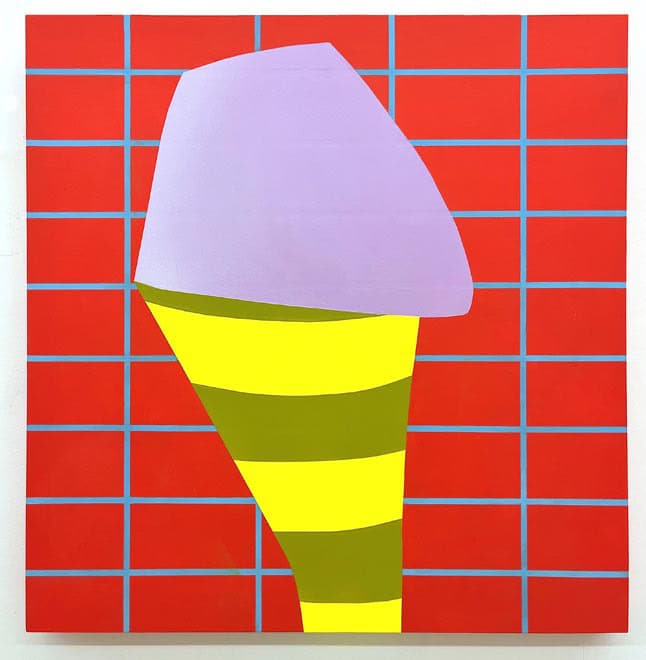
Regarding her process, she said, “Some of the exhibitions that I do are project-based in that they have a specific problem that they’re trying to solve. And in some ways, that makes it easier. For this show that’s coming up for Guild Hall, there was a mandate, which was to design a space that was functional but also art-filled – a room that in and of itself is experiential – that people could hang out in.” Speaking of the process, she said,” I’ve spent probably a bunch of months sitting with the idea – taking notes, doing research. When I started actively working on it, i had to start making decisions, eliminating some of those initial ideas – and it’s this process of spilling everything onto the page and then taking things away and finding what feels and works best. What makes the most sense conceptually, visually, and functionally.”
Diving deeper into the conversation, Ms. Zigmund opened up and said, “It’s this sort of a marriage of a lot of different things in my work – it’s a kind of totality. There’s a social aspect, there’s a functional aspect, there’s an art aspect. I think the thing that excites me the most is there’s the opportunity to invite other artists into this space, as well as to invite the public into the space to actually participate in art making. There will be a series of programs throughout the run of the show, as well as an ongoing community project that people can work on in the space if they choose
Her Guild Hall exhibition, is it a collaboration? She answered, “It’s a little bit of both, I am working with a furniture maker, Jusitn Allen. We designed a chair together, and there are some pieces that I’m hoping to collect and bring into the space. So, it’s a combination of originals and collected pieces and work that other artists have made also to be used. It is in conjunction with another show happening simultaneously at Guild Hall called Functional Relationships” – artists made furniture. You can’t sit on the work in that show – but you can in mine.
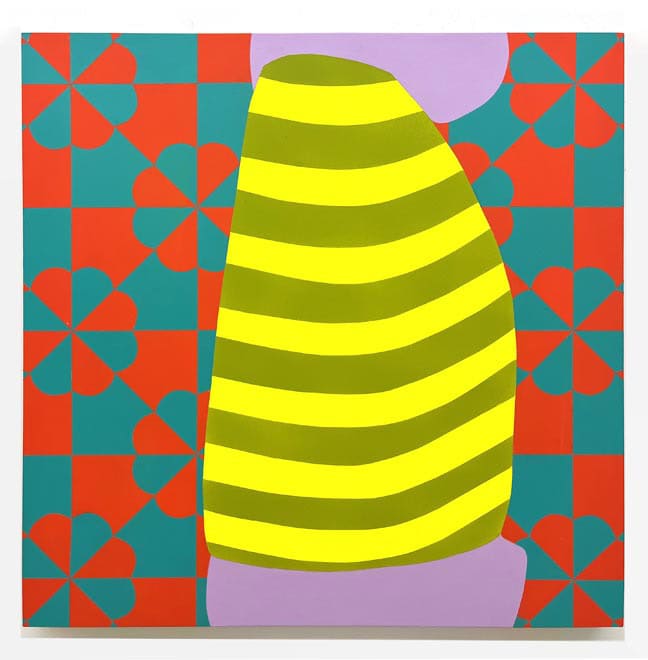
On her best moments of being an artist, she said, “It is when I am making something, and I am not sure at first what it is, and then it reveals itself – a discovery of sorts. Often I am unsure yet what it is, whether or not it is any good. You sit with it over time, and you make connections with past work, past ideas, and then an aha moment when you realize it is something…It’s not a given; it’s not a daily occurrence. The daily practice of making art is just showing up to your studio to make and work and be present, but there isn’t always that moment of flow. There isn’t always that moment where you really feel like you’ve hit upon something that is surprising even to you. But when those moments happen, they are affirming, and I feel like I am where I am supposed to be. They’re exciting and generative, and they lead to other ideas. I don’t know why, but they’re rare – but they happen in the work.”
About artist channeling, Zigmund said, “Some artists say they have moments when they feel like they’ve been channeled. I think that is kind of a situation in which your inner sort of insecurity is turned off, and, you know, you’ve just kind of broken through to something else. I mean, there have been projects that I feel like I have done what, it’s I did something despite myself, and then I realized I was doing something else after it was finished, and that becomes very generative.”
Almond Zigmund: Wading Room at Guild Hall opens May 4th and runs until July 13th.


